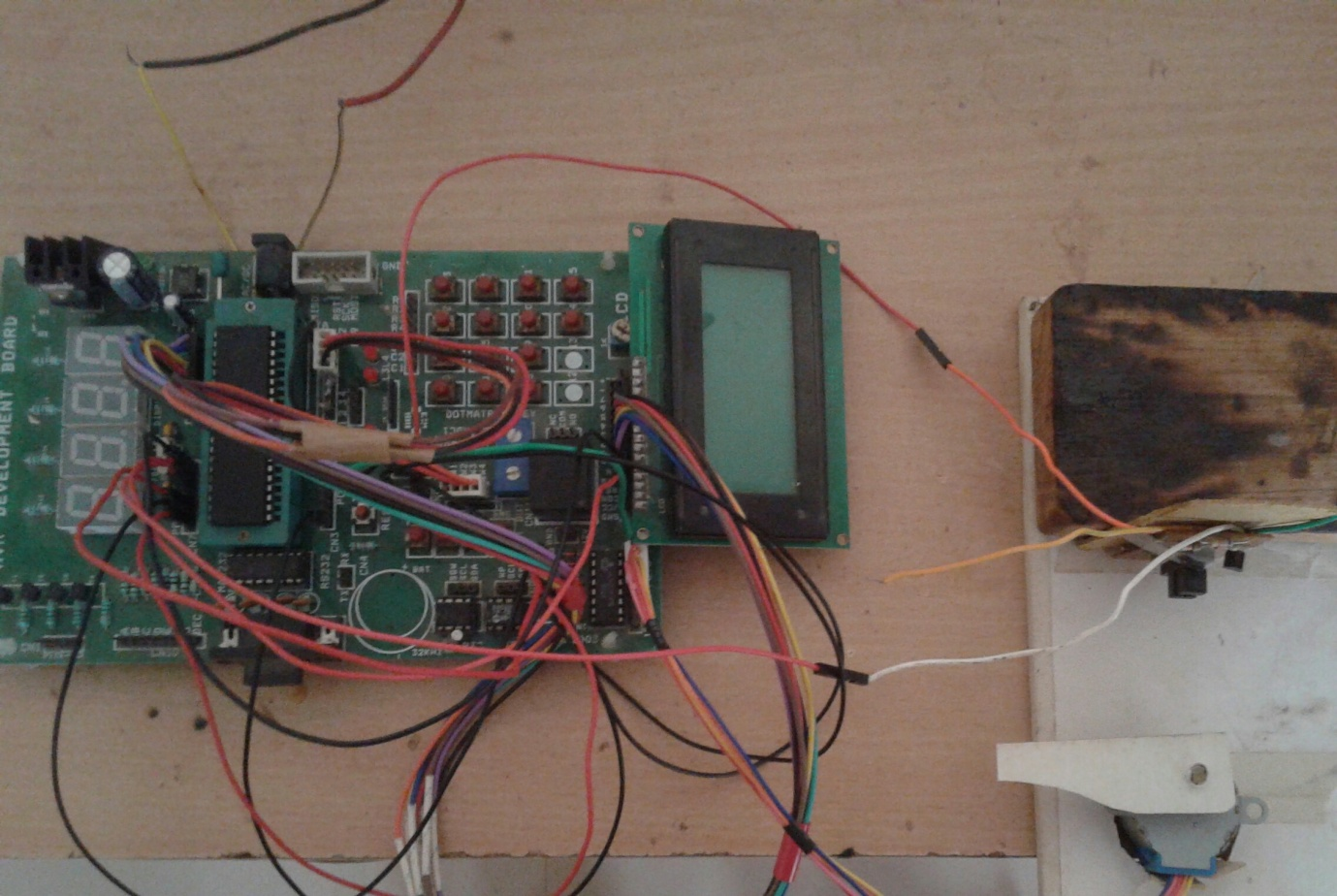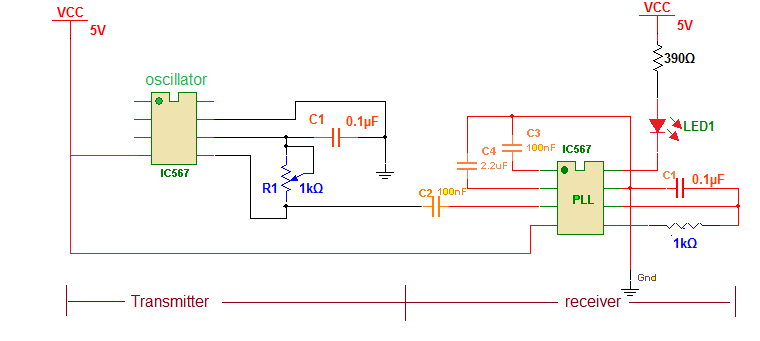Phase lock loop is one of the most essential building blocks of any communication system. It locks to particular frequency and generates output. It is used in electronics frequency control like in satellite communication, air born navigation, radar and FM communications. PLL are used in
-
Frequency multiplication or division
-
AM demodulation
-
FM demodulation
-
FSK demodulation
-
Satellite tracking system
The phase lock loop (PLL) consist of phase comparator, low pass filter and a voltage controlled oscillator (VCO) in feedback path. The phase comparator compares frequency and phase of input signal with VCO output signal. It generates +ve or –ve signal if there is difference in frequency or phase between input signal and VCO output. This voltage is further filtered by LPF and DC voltage is given to VCO. So VCO will increase or decrease its output signal frequency. When there is a match in frequency and phase of both these signals, comparator output is 0 and PLL is said to be locked at that frequency.
The given circuit demonstrates PLL operation. It uses PLL chip NE567 as free running VCO as well as phase lock loop. At the transmitter side IC NE567 is used as free running VCO that generates square wave and at the receiver side it is configured as PLL that lock at one frequency and gives low output.
Circuit description:
There are two sections in circuit 1) transmitter and 2) receiver. Both transmitter and receiver are built using IC NE567
Transmitter: as shown in figure it is build using only three components 1) IC NE567 2) 1 K pot and 3) 0.1 uF capacitor. 1K pot is connected between terminal 5 and 6 that are resistance timing component terminals of chip. Capacitance is connected to terminal 6 that is capacitance timing component terminal. Output is taken from terminal 5. Here IC NE567 works as free running square wave oscillator and its output frequency is determined by value of R1 and C1 as
F = 1 / 1.1 R1C1
Receiver: the output of transmitter is given to input (3) of receiver through coupling capacitor C2. One 2.2 uF capacitor is connected to terminal 2 that serves as low pass filter capacitor (there is inbuilt low pass filter in IC which requires external capacitor). One more 0.1 uF capacitor is connected to terminal 1 that serves as output filter capacitance. 1 K resistance is connected between terminals 5 and 6 and 0.1 uF capacitor is connected to terminal 6 for RC timing components. One LED is connected to output (8) as shown with current limiting resistor of 390E. Here the IC NE567 works as PLL and its lock frequency is determined by value of R and C as
F = 1 / 1.1 RC
Here is the snap of circuit build on bread board

Fig. 1: Prototype of NE567 IC based Phase Locked Loop Circuit
Circuit operation:
The transmitter generates square wave and its frequency is varied by varying 1K pot. This square wave output is given as input to receiver that is working as PLL. It locks at one particular frequency and gives low output. When output goes low, the LED glows because it is connected in current sinking mode. The frequency of transmitter and lock frequency of PLL receiver depends upon RC timing components. And because we have used same values of R and C at both sides when value of 1 K pot matches with receivers 1 K resistance, the generated frequency and lock frequency also matches because of same equation
F = 1 / 1.1 RC
So the PLL locks and gives low output to blink LED.
Circuit Diagrams
Project Video
Filed Under: Electronic Projects
Filed Under: Electronic Projects



Questions related to this article?
👉Ask and discuss on EDAboard.com and Electro-Tech-Online.com forums.
Tell Us What You Think!!
You must be logged in to post a comment.